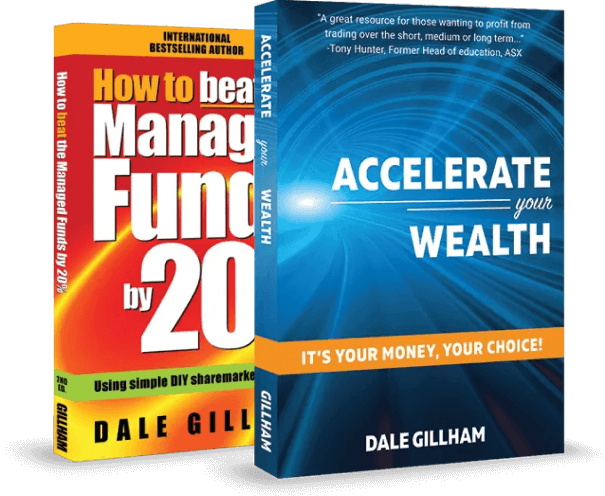How to Maximise Returns with Tax-Efficient Investing

By Dale Gillham
Introduction
When it comes to investing, it’s not just about how much you earn—it’s also about how much you keep. Taxes can significantly impact your investment returns, making tax-efficient investing a crucial strategy for optimising your portfolio. By understanding and implementing tax-saving strategies, you can minimise your tax liabilities and maximise your net returns.
In this article, we'll explore practical tips and strategies for tax-efficient investing, helping you reduce your tax burden and boost your overall financial success. Whether you're just starting out or looking to optimise an existing portfolio, these strategies will provide valuable insights to enhance your investment outcomes.
The Importance of Tax Efficiency in Investing
Taxes are often one of the largest expenses an investor faces, yet many overlook the impact of taxes on their investment returns. Even small tax inefficiencies can compound over time, eroding your wealth and diminishing the power of your investments. That’s why tax-efficient investing is essential—it allows you to keep more of your gains, ensuring your investments grow faster and more effectively over the long term.
By strategically selecting tax-efficient investment vehicles and employing smart tax-saving strategies, you can significantly enhance your portfolio’s performance without necessarily increasing your investment risk. It’s about making your money work smarter, not harder, by reducing the drag that taxes can impose on your investment growth.
Tax-Efficient Investment Vehicles
One of the most effective ways to reduce your tax liability is by choosing the right investment vehicles. In Australia, certain accounts and funds are designed to minimise or defer taxes, allowing your investments to grow with fewer tax interruptions. Understanding these vehicles and how to use them can be a game-changer in your investing strategy.
Tax-Deferred Accounts (Superannuation)
Superannuation (super) is one of the most tax-effective investment vehicles available to Australians. Contributions to superannuation accounts are taxed at a concessional rate of 15%, which is significantly lower than most individuals' marginal tax rates. This allows your investments to grow in a tax-advantaged environment, providing substantial long-term benefits.
Superannuation funds also benefit from low tax rates on investment earnings, with a 15% tax on earnings and a reduced rate of 10% on capital gains for assets held longer than 12 months. In retirement, withdrawals from a superannuation account can be tax-free for individuals over the age of 60, making it an excellent vehicle for long-term retirement savings.
It's important to understand the contribution limits to superannuation accounts, which include concessional (pre-tax) and non-concessional (after-tax) contributions. Staying within these limits ensures you maximise the tax benefits of super while avoiding additional taxes or penalties.
Tax-Free Accounts (Australian Investment Bonds)
Australian Investment Bonds offer another tax-efficient investment option, particularly for those looking for long-term savings outside of superannuation. Investment bonds are unique in that they allow your investment to grow tax-paid, meaning the bond issuer pays the tax on earnings at the corporate tax rate of 30%. If you hold the bond for at least 10 years, withdrawals are tax-free, making it an attractive option for long-term wealth building.
Investment bonds also offer flexibility, as you can invest in a wide range of asset classes, including shares, property, and fixed interest. This allows you to tailor your investment strategy within the bond to suit your risk tolerance and financial goals while still enjoying the tax benefits.
Investment bonds are particularly beneficial for individuals who have reached their superannuation contribution caps or who want to invest for specific goals outside of retirement. The ability to nominate beneficiaries can also make investment bonds a useful tool for estate planning.
Strategies for Minimising Taxes
Beyond choosing the right investment vehicles, there are several strategies you can implement to further reduce your tax burden and maximise returns. These strategies involve not only where you invest but also how you manage your investments over time.
Asset Location
Asset location involves strategically placing different types of investments in the most tax-efficient accounts. For example, investments that generate a lot of taxable income, such as bonds or high-dividend stocks, may be better suited for tax-deferred accounts like superannuation. Conversely, investments that benefit from capital gains treatment, such as shares held for more than a year, might be more appropriate in a taxable account or an investment bond.
By aligning the tax characteristics of your investments with the appropriate accounts, you can minimise taxes and improve your portfolio's after-tax return. For example, placing growth stocks that you intend to hold for many years in a taxable account allows you to take advantage of the 50% capital gains tax discount available to Australian investors. Meanwhile, placing income-generating assets in superannuation can shield that income from higher marginal tax rates.
Another example is investing in real estate through a Self-Managed Superannuation Fund (SMSF), where income and capital gains within the fund are taxed at the lower superannuation rates, providing a tax-efficient way to build wealth through property investment.
Tax-Loss Harvesting
Tax-loss harvesting is a strategy that involves selling investments at a loss to offset gains in other parts of your portfolio. By realising losses, you can reduce your taxable income and lower your tax bill. For instance, if you have shares that have declined in value, selling them can generate a capital loss that can be used to offset capital gains or even a portion of your ordinary income.
In Australia, capital losses can be carried forward indefinitely and used to offset future capital gains, providing ongoing tax benefits. However, it's important to be mindful of the "wash sale" rule, which prohibits you from repurchasing the same or a substantially identical security within 30 days of the sale if you want to claim the loss for tax purposes.
Tax-loss harvesting can be particularly effective in volatile markets, where certain investments may experience temporary declines. By actively managing your portfolio and strategically realising losses, you can optimise your tax situation without significantly altering your overall investment strategy.
Holding Period Considerations
The length of time you hold an investment can significantly impact your tax liability. In Australia, investments held for more than 12 months are typically eligible for a 50% capital gains tax discount, which reduces the amount of tax owed on your investment profits. By planning your holding periods carefully, you can reduce the amount of taxes owed on your investment gains.
For example, if you're approaching the one-year mark on a profitable stock, it may be wise to hold onto it a little longer to benefit from the capital gains tax discount. Conversely, if you need to sell an investment before reaching the one-year threshold, be prepared for the full capital gains tax rate, which can be significantly higher.
Additionally, consider the impact of dividends on your holding period strategy. Qualified dividends in Australia are subject to the imputation system, where dividends come with franking credits that can offset tax liabilities. Understanding these rules can help you optimise the tax treatment of your dividend income.
Common Mistakes and How to Avoid Them
Even experienced investors can fall into traps that increase their tax liability. Here are some common mistakes and how to avoid them.
Overlooking Tax Implications
One of the biggest mistakes investors make is ignoring the tax implications of their investment decisions. For instance, frequently buying and selling shares in a taxable account can lead to a high tax bill due to short-term capital gains. To avoid this, be mindful of the tax consequences before making trades and consider using tax-efficient funds that minimise turnover.
It’s also important to be aware of the impact of managed fund distributions. Actively managed funds can generate significant capital gains distributions, which are taxable to investors even if they haven’t sold any shares. To minimise this impact, consider holding actively managed funds in tax-advantaged accounts like superannuation or choosing tax-managed funds designed to reduce taxable distributions.
Misplacing Assets
Another common mistake is placing tax-inefficient investments in taxable accounts. For example, holding a high-yield bond fund in a taxable account can lead to unnecessary taxes on the interest income. Instead, consider placing such assets in tax-deferred or tax-free accounts where the income won’t be taxed until withdrawn (if at all).
Additionally, be cautious when holding foreign investments in taxable accounts. Australian investors are subject to foreign tax obligations, which can complicate your tax situation. Holding foreign investments in a tax-advantaged account like superannuation can simplify your tax reporting and potentially reduce your overall tax burden.
Creating a Tax-Efficient Investment Plan
Maximising your investment returns isn’t just about choosing the right stocks or funds; it’s also about minimising the taxes you pay along the way. By understanding and implementing tax-efficient investing strategies—such as selecting the right investment vehicles, optimising asset location, and practising tax-loss harvesting—you can significantly reduce your tax burden and increase your net returns.
To build a truly tax-efficient investment plan, it’s important to regularly review your portfolio, stay informed about changes in tax laws, and consider consulting with a financial advisor who can tailor strategies to your specific situation. With careful planning and smart decisions, you can ensure that more of your hard-earned money stays in your pocket, helping you achieve your long-term financial goals.
As tax laws and investment options evolve, staying proactive about tax efficiency can make a substantial difference in your financial outcomes. By taking the time to understand and apply these strategies, you'll be better positioned to grow and protect your wealth over time.






